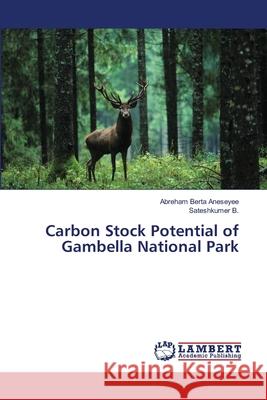Carbon Stock Potential of Gambella National Park » książka
Carbon Stock Potential of Gambella National Park
ISBN-13: 9783659466427 / Angielski / Miękka / 2013 / 96 str.
ABSTRACT Recent attempts to mitigate global climatic change have brought forestry based carbon sequestration into sharp focus due to its potential to absorb CO2 from the atmosphere. Although a number of studies have been done on carbon stock estimation, the National Park carbon stock has not been properly addressed. This paper was conducted to estimate the carbon stock in forest of the Gambella National Park with 76 plots in the categories of riverine and terrestrial forest. The total mean carbon stock in forest part of the National Park was 394.85 24.34ton/ha. The carbon stocks in each pool exhibited distinct patterns between the forest Stratum (riverine and terrestrial). The total carbon stock in the riverine forest and forest land/wood land was 454.51 26.01ton/ha and 324.89 17.25 ton/ha respectively. The results of LULCC (Land use land cover change) analysis indicated that the forest and woodland decreased at an average rate of 120,470.6ha. This study concluded that despite the rapid decline in the forest land and woodland coverage, the existing forest/wood land has a huge potential sequestration of carbon for mitigation of climate change."
ABSTRACT Recent attempts to mitigate global climatic change have brought forestry based carbon sequestration into sharp focus due to its potential to absorb CO2 from the atmosphere. Although a number of studies have been done on carbon stock estimation, the National Park carbon stock has not been properly addressed. This paper was conducted to estimate the carbon stock in forest of the Gambella National Park with 76 plots in the categories of riverine and terrestrial forest. The total mean carbon stock in forest part of the National Park was 394.85±24.34ton/ha. The carbon stocks in each pool exhibited distinct patterns between the forest Stratum (riverine and terrestrial). The total carbon stock in the riverine forest and forest land/wood land was 454.51±26.01ton/ha and 324.89±17.25 ton/ha respectively. The results of LULCC (Land use land cover change) analysis indicated that the forest and woodland decreased at an average rate of 120,470.6ha. This study concluded that despite the rapid decline in the forest land and woodland coverage, the existing forest/wood land has a huge potential sequestration of carbon for mitigation of climate change.











